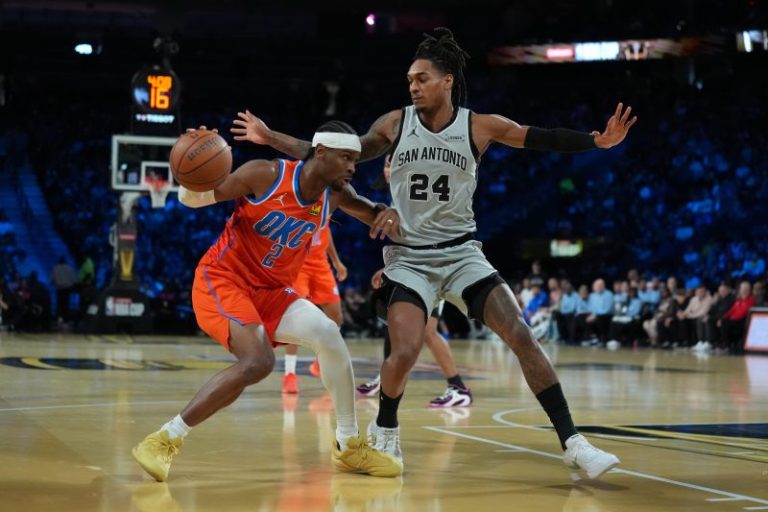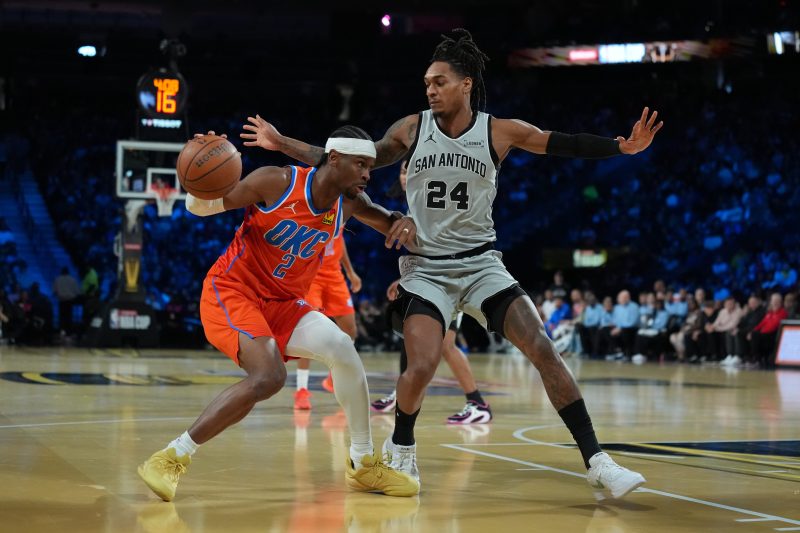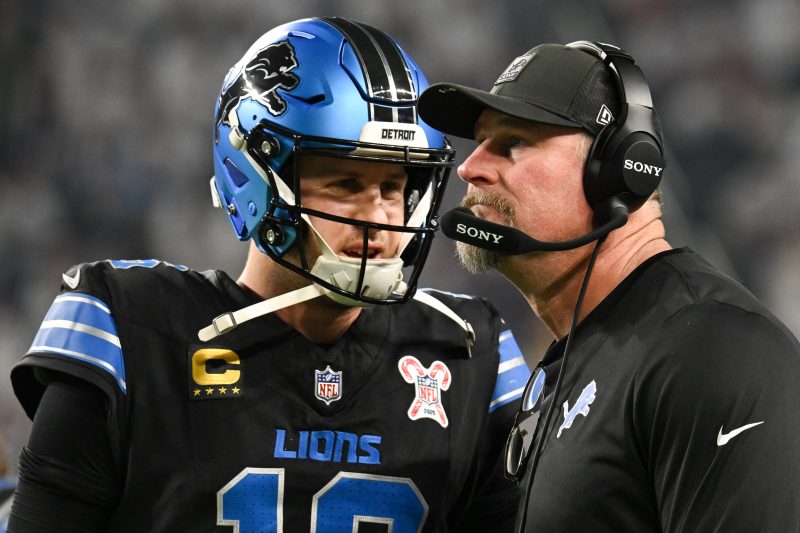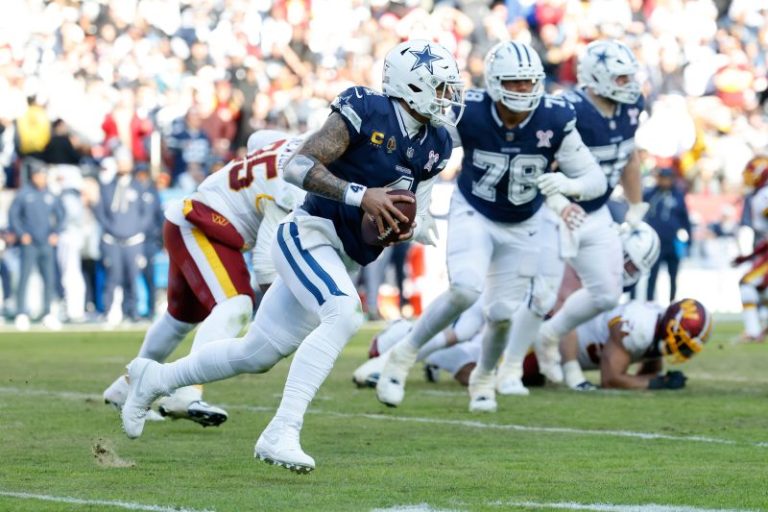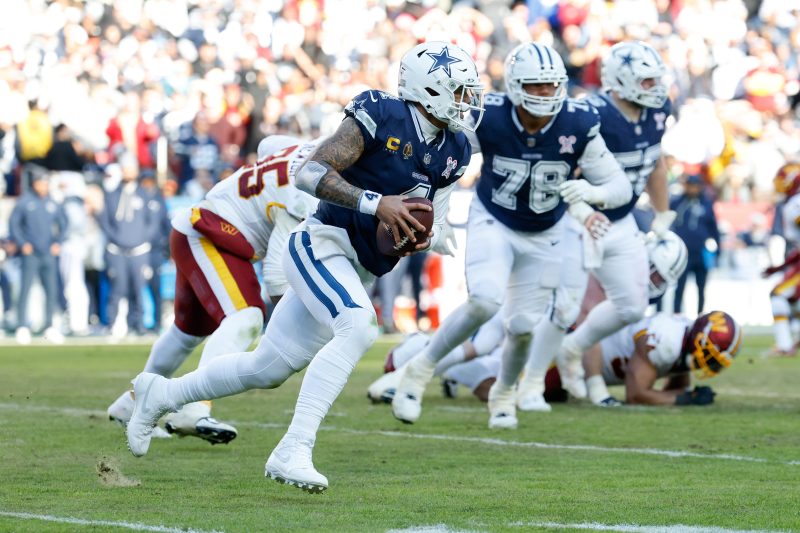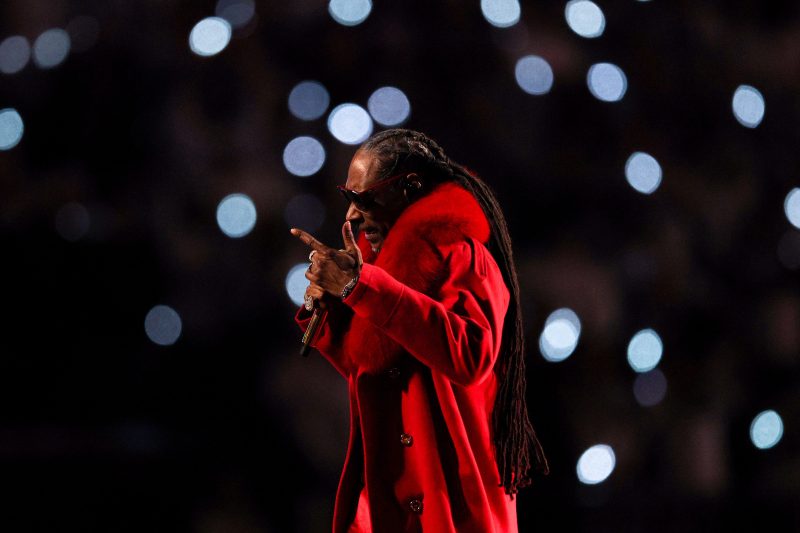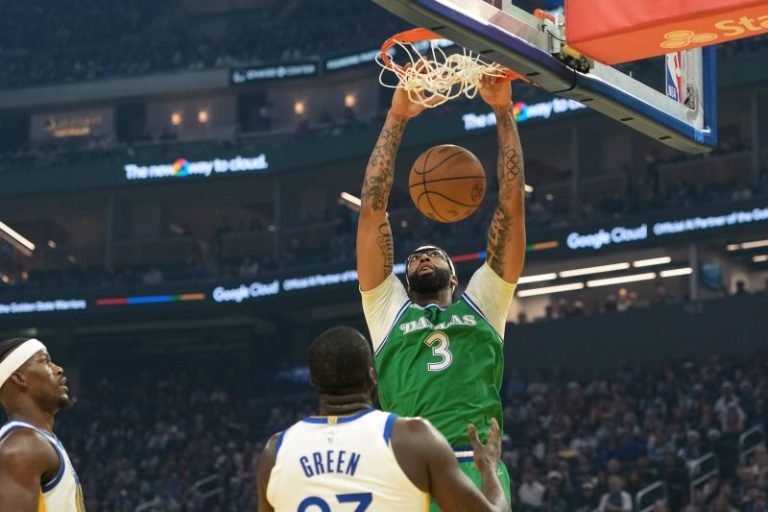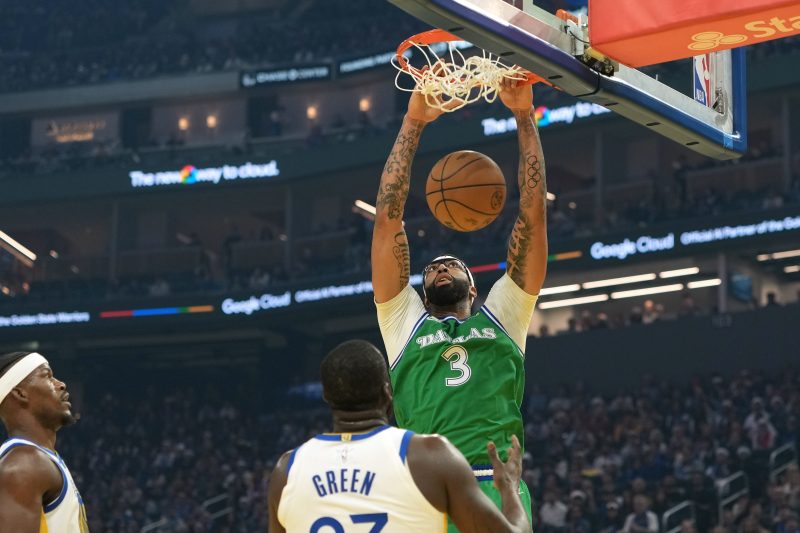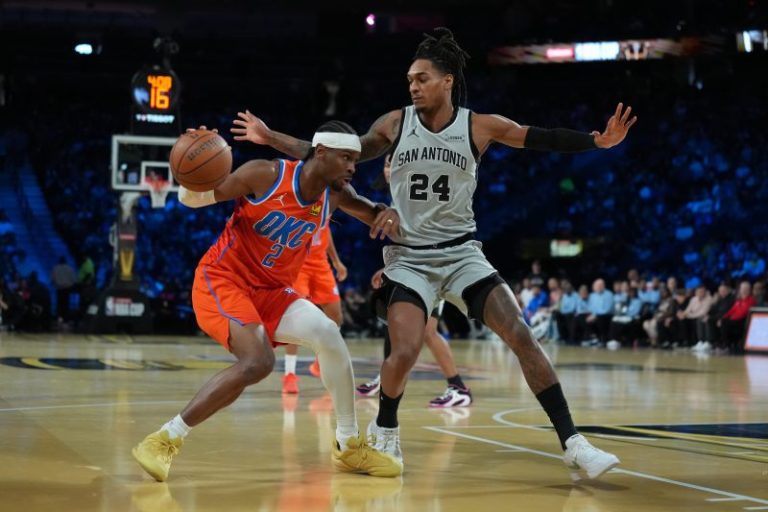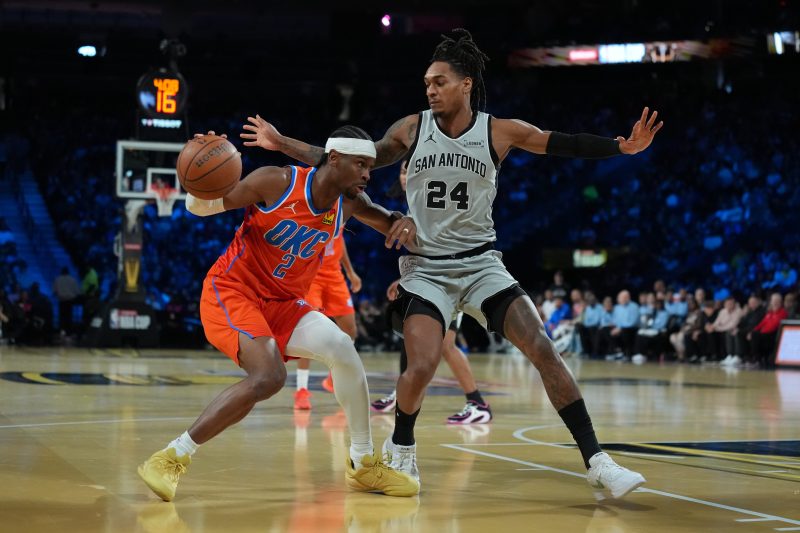
In what was a thrilling game of runs, it was the New York Knicks who prevailed.
After facing a 17-point deficit with a little more than 10 minutes to play, the Knicks toppled the Cleveland Cavaliers, 126-124, on Thursday, Dec. 25 in the thrilling first leg of the five-game Christmas slate.
New York got massive contributions from key role players down the stretch such as Tyler Kolek (16 points, 9 assists) and Jordan Clarkson (25 points), but it was Jalen Brunson’s 34 points that helped the Knicks pull away.
Nonetheless, it was a team effort; during a stretch that started at 2:27 left in the fourth, five different Knicks made field goals.
The 17-point comeback marks New York’s biggest come-from-behind victory of the 2025-26 season.
The Cavaliers (17-15) went cold late in the game, shooting just 9-of-27 in the fourth quarter. Donovan Mitchell tried to will the Cavs back and led the team with 34 points.
The Cavs had been 13-0 this year when holding a lead entering the fourth quarter.
The Knicks had six players reach double figures in scoring.
Knicks vs. Cavaliers highlights
Knicks vs Cavaliers final player stats
Knicks scoring leaders
- Jalen Brunson 34 points, Jordan Clarkson 25 points, Tyler Kolek 16 points
Knicks rebound leaders
- Karl-Anthony Towns 14, Mitchell Robinson 13
Cavaliers scoring leaders
- Donovan Mitchell 34 points, Darius Garland 20 points, Jaylon Tyson 16 points
Cavaliers rebound leaders
- Evan Mobley 9, Jarrett Allen 8
Knicks vs Cavaliers final team stats
- FG%: Cavaliers 52%, Knicks 47%
- 3PT%: Knicks 48%, Cavaliers 44%
- FT%: Cavaliers 83%, Knicks 77%
- Rebounds: Cavaliers 45, Knicks 43
- Assists: Cavaliers 30, Knicks 28
- Turnovers: Knicks 13, Cavaliers 14
- Steals: Knicks 9, Cavaliers 7
- Blocks: Knicks 4, Cavaliers 0
Cavaliers vs. Knicks going down as thrilling finish
Down the stretch, a Donovan Mitchell missed 3 led to a Mikal Bridges pullup jumper, which led to a Darius Garland scoop, which led to a Jalen Brunson 3-point bucket.
All in all, the lead changed three times on consecutive possessions.
The Knicks lead 121-119 with 55.3 seconds left to play.
Knicks tie game, as action heats up
With a Jalen Brunson step-back 3, the Knicks tied the game at 113, before ceding four straight Cavs points.
The first time, Donovan Mitchell was fouled after stealing the ball near midcourt. He hit both free throws and then Evan Mobley put back a missed shot.
Tyler Kolek then responded with a 3 to close the game to 117-116, in favor of the Cavs.
Knicks closing the deficit
The Knicks are making it interesting down the stretch.
After trailing by 17 points early in the fourth quarter, New York has charged back to make it a three-point game with 4:31 left to play.
Backup guard Tyler Kolek drained a pair of 3s and then hit a 21-foot jumper to reach 13 points off the bench. Cavaliers coach Kenny Atkinson, seeing his team ceding momentum, called a timeout.
The Cavaliers are up 111-108.
Josh Hart injured
Knicks forward Josh Hart limped off the floor midway through the fourth quarter with an apparent lower leg injury. The injury happened with 7:43 left in the game, after Hart appeared to roll his ankle when he was fouled on a drive to the basket.
Hart drained both free throws, but then limped straight to the locker room.
End Q3: Cavaliers 89, Knicks 78
The Knicks, when they needed it most, went ice cold.
New York shot just 6-of-21 (28.6%) from the floor in the third quarter, though the cold spell came midway through the period.
Early in the third, the Knicks and Cavaliers settled into their offensive and defensive sets, with the action being more competitive. The back-and-forth pace led to teams exchanging leads. The Cavaliers, however, launched a 9-0 run midway through the period to pull ahead and build a moderate lead into the fourth.
The Cavaliers have done an excellent job outhustling New York on the glass, gaining a six-rebound edge.
Jalen Brunson has struggled from the floor, shooting just 6-of-17 (35.3%), though he leads all New York players with 21 points.
The Cavaliers have had a far more balanced approach to offense, with six players in double-figures. Donovan Mitchell leads all Cavs with 19 and Darius Garland is just behind him with 18.
Most consecutive NBA games played
Since he was selected 10th overall in the 2018 draft, Knicks forward Mikal Bridges has played in each game across his seven seasons, with his current mark at 586.
Knicks vs Cavaliers predictions
- Scooby Axson: Knicks 121, Cavaliers 118
- Mark Giannotto: Knicks 119, Cavaliers 110
- Jon Hoefling: Knicks 124, Cavaliers 111
- Lorenzo Reyes: Knicks 130, Cavaliers 101
- James Williams: Knicks 117, Cavaliers 113
Cavaliers vs Knicks player stats at halftime
Cavaliers leading scorers
- Darius Garland 13 points, Donovan Mitchell 12 points
Cavaliers leading rebounders
- Donovan Mitchell 4, Sam Merrill 3, Evan Mobley 3
Knicks leading scorers
- Jalen Brunson 14 points, Jordan Clarkson 14 points
Knicks leading rebounders
- Karl-Anthony Towns 6, Josh Hart 4
Cavaliers vs Knicks halftime stats
- FG%: Cavaliers 56, Knicks 50
- FT%: Knicks 80, Cavaliers 75
- 3PT%: Cavaliers 50, Knicks 45
- Rebounds: 18-18
- Assists: Knicks 15, Cavaliers 14
- Turnovers: Knicks 7, Cavaliers 9
- Blocks: Knicks 2, Cavaliers 0
End Q2: Knicks 60, Cavaliers 58
The most impressive part about New York’s 18-0 run to start the second quarter was that it came entirely with Jalen Brunson on the bench.
The Knicks spread the ball and relied on Karl-Anthony Towns to drive the ball and open up the offense for kickouts and open looks. The bigger problem for the Cavs was that their offense was completely interrupted by repeated turnovers early in the second. That allowed New York to get fastbreak points in transition, and it limited the chances Cleveland had to put up shots.
New York outscored Cleveland 37-20 in the period, but the Cavs would settle after they sprinkled in zone defense to slow the Knicks down.
New York shot 14-of-22 (63.6%) in the quarter, while the Cavaliers took five fewer attempts from the field because of the turnovers. Cleveland shot 7-of-17 (41.2%) in the second.
Jalen Brunson and Jordan Clarkson lead all players with 14 points.
Darius Garland leads the Cavs with 13.
Knicks take lead with run in 2nd quarter
It turns out, the Knicks just needed a quarter to warm up.
New York started the second period with far more pace and intensity and outscored Cleveland 22-3 in the early minutes, including a 16-0 run to take a lead at 45-41. Turnovers have become a problem for the Cavaliers, as the Knicks are pressuring the ball and getting out in transition to change the tenor of the game.
End Q1: Cavaliers 38, Knicks 23
Christmas started a little late for the Knicks.
New York opened the game just 1-of-10 and missed its first six 3-point shots, falling into an early 18-3 hole. The Cavaliers, meanwhile, started hot, making five of their first seven attempts.
The Knicks would get back into it somewhat, but it was Cleveland’s defense that set the tone. The Cavaliers did an excellent job of stopping New York’s first few offensive actions and forcing the Knicks to play deep into the shot clock. That resulted in rushed shots and disjointed offense, overall.
The Cavaliers shot a blazing 13-of-19 (68.4%) from the floor in the period, including 6-of-11 from beyond the arc.
Just two minutes into the game, Karl-Anthony Towns drew a pair of fouls that forced coach Mike Brown to pull him after just 2:44. This has been an issue throughout Towns’ career, but particularly this season.
Cavaliers guard Donovan Mitchell led all players in the first quarter with 12 points on 5-of-6 shooting. Darius Garland added 9 points, while Jalen Brunson led the Knicks with 10 points on 4-of-10 shooting.
Cavaliers vs. Knicks gets underway
Before a single point was scored Thursday, the game was briefly halted because of a mistimed confetti drop. Just one minute into the game, some very festive red confetti fell to the floor, causing support staff at Madison Square Garden to clean it up.
The stoppage was brief and play resumed, but, either way, action is underway at the Garden.
It wasn’t a great start for the Knicks. Karl-Anthony Towns drew a pair of early fouls and coach Mike Brown called a timeout after he was displeased with his team’s performance, falling into an early 5-0 hole.
Knicks head coach 2025
The Knicks hired Mike Brown as their head coach July 4 after they fired former coach Tom Thibodeaux in June.
What time is Cavaliers vs Knicks Christmas game today?
Tip-off is scheduled for noon ET on Dec. 25 for the Cleveland Cavaliers clash with the New York Knicks at Madison Square Garden in New York.
Watch NBA Christmas games with Fubo
How to watch Cavaliers vs Knicks NBA Christmas game: TV, live streaming
The game between the Cleveland Cavaliers and New York Knicks will be broadcast nationally on ABC and ESPN and can be live streamed via Fubo.
- Date: Dec. 25, 2025
- Time: Noon ET
- Location: Madison Square Garden (New York)
- TV: ABC, ESPN, ESPN2
- Streaming: Disney+, Fubo
NBA starting lineups
The Knicks and Cavaliers have released their starting lineups ahead of their Christmas Day game:
Cleveland Cavaliers
- Darius Garland
- Donovan Mitchell
- Sam Merrill
- Dean Wade
- Jarrett Allen
New York Knicks
- Jalen Brunson
- OG Anunoby
- Mikal Bridges
- Josh Hart
- Karl-Anthony Towns
Is Evan Mobley playing today?
After missing five games with a Grade 1 left calf strain, Cavaliers forward Evan Mobley will make his return to the floor against the Knicks.
Cleveland officially listed Mobley, last season’s Defensive Player of the Year, as available on the injury report prior to the game. Mobley will come off the bench.
Knicks record on Christmas Day
No team has played more Christmas Day games in NBA history than the New York Knicks, who, interestingly, are well below .500 on Dec. 25, with a record of 25-32.
Cleveland’s mark on Christmas, meanwhile, is an even 7-7.
Cavaliers vs. Knicks odds
The New York Knicks are favored to beat the Cleveland Cavaliers according to the DraftKings odds as of Dec. 24.
- Line: Knicks -5.5
- Over/under: 239.5
This post appeared first on USA TODAY





